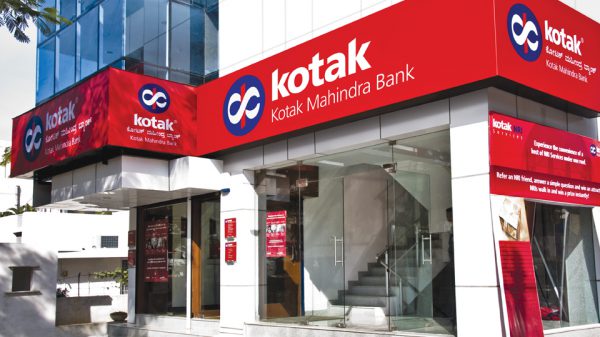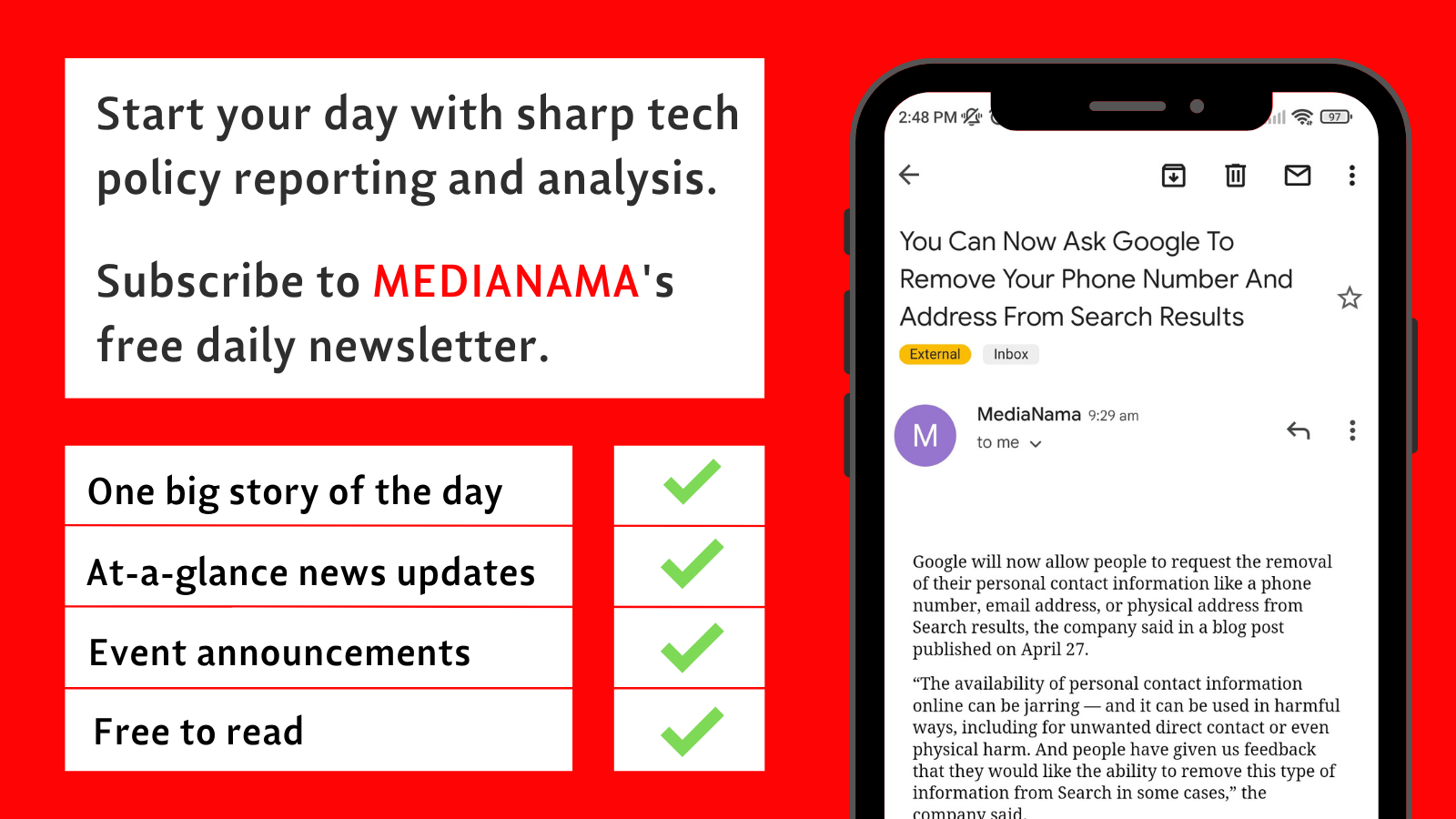By Samir Gandhi and Rahul Rai
Big technology firms, their market power, and widespread allegations of abuse of such power have piqued lawmakers and regulators across the globe in recent years. The European Union has responded by enacting the Digital Markets Act (DMA) that prescribes a series of dos and don’ts for companies qualifying as “gatekeepers”.
In the United States, President Biden signaled his resolve to aggressively pursue antitrust cases against big-tech firms by appointing Lina M. Khan, the author of the widely read Yale Law Journal paper “Amazon’s Antitrust Paradox”, as the chair of the Federal Trade Commission (FTC). While the Lina Khan-led FTC aggressively pursues President Biden’s agenda, US lawmakers are trying to build consensus around a set of ex-ante competition rules aimed at big-tech firms. Several other countries across Europe and Asia-pacific are exploring ex-ante competition rules suited to their own political-economy needs.
STAY ON TOP OF TECH POLICY: Our daily newsletter with the top story of the day from MediaNama, delivered to your inbox before 9 AM. Click here to sign up today!
Taking a balanced approach to intervention in entrepreneurial space
Rulemaking and enforcement actions alone aren’t sufficient to usher structural shifts in competitive dynamics in any market. Moreover, intervention through new laws or increased regulatory oversight runs the risk of chilling innovation and may dampen entrepreneurial risk-taking. Naturally, such interventions require careful balancing.
The Government of India appears to be conscious of this. It’s been contemplating the introduction of a series of laws aimed at regulating big-tech firms. But it has consistently followed a measured approach. It has involved technical experts and held extensive consultations. When in doubt, it has referred draft bills to specially-constituted Parliamentary committees. For example, it referred the Competition Amendment Bill, 2022, to the Parliamentary Standing Committee on Finance for its input.
Creating conditions conducive to innovation is another way to increase competition. This approach reduces the risk of dampening innovation and entrepreneurial risk-taking. Innovation-led creative disruption can and indeed does alter the competitive dynamics in the market. Take, for example, the online general search market: Google’s seemingly impregnable position, held for more than two decades, suddenly seems fragile. Just ask ChatGPT.
Reimagining competition with Digital Public Infrastructure
However, till the time a new technology helps a challenger firm leapfrog the incumbents, the potential for anti-competitive business practices may linger. Realizing this, the Government of India appears to be working to create the right conditions for increasing the pace of creative disruption in India. It is doing so by imagining a new economic world order of digital infrastructure as a public good. We already have one success story, and another is in the works.
The UPI Story
The Unified Payment Interface (UPI) developed and launched by the National Payments Corporation of India (NPCI) in 2016 has emerged as a revolutionary, user-friendly, real-time payment solution that facilitates inter-bank transactions. UPI has helped create a parallel system facilitating real-time money transfers between banks, bypassing traditional forms such as RTGS, NEFT, and IMPS. It comprises a technology stack with a standard and open Application Programming Interface (API) to facilitate online payments. The standard and open APIs that comprise the UPI technology stack have helped create a single and much simpler payment interface across all NPCI systems.
The standard and open APIs make all UPI-based payment systems interoperable—resulting in an explosion of competition in the market for facilitating online payments. The focus on interoperability has unleashed intense competition, all to the benefit of end consumers. Merchants and individual consumers no longer need to foot the materially significant transaction fees.
Buoyed by the success of UPI and its potential to unlock efficiencies, fuel innovation, and increase consumer welfare, the Government of India appears to have realized the benefits of reducing barriers to entry not by regulatory diktat alone. Rather, by encouraging the creation of a completely new system that competes with existing proprietary business models adopted by incumbents. Perhaps for the first time, India is charting a course driven by the core idea of competition- reduce barriers to entry, and then let the market forces decide the winners.
As the Indian retail industry moves away from brick-and-mortar stores to online platforms, it stares at a similar marketplace reality as that of the legacy financial sector—lack of interoperability, proprietary systems, and an unequal distribution of gains. The competition amongst online retail platforms is intense, and the benefit to end consumers is immense. Yet, the prospect of competition between open API-based online platforms and proprietary platforms could unlock unimaginable gains for all stakeholders in the online retail market.
The ONDC story
Open Network for Digital Commerce (ONDC), the Government of India’s brainchild, is all about eliminating barriers to entry at each layer of online retail transactions. Most online retail platforms, be it homegrown platforms like JioMart or global platforms like Amazon, have worked hard to address primarily five things: the onboarding of sellers, access to storage, delivery, and returns, secure payment mechanism, and online listing and dispute resolution. Each of these aspects of online retail requires considerable investment.
Take, for example, the onboarding of sellers. An online marketplace must first work with sellers to help them transition from physical mode of operations to digital, and empower them to plug into the seller side of the platform. This is done through APIs. Invariably a private firm would create proprietary APIs. Resultantly, each private platform is built on a proprietary tech stack making it difficult for stakeholders at both the back end (sellers, warehousing, and delivery) and consumer-facing side to seamlessly switch to competing platforms.
Like UPI, ONDC seeks to create standard and open APIs for each layer of the e-commerce tech stack. ONDC’s beta testing in Bangalore has shown encouraging results. As it expands to other cities, we will see even greater competition in Indian retail. ONDC seeks to democratize digital commerce in India. In the process, it will ensure that no single firm becomes an entrenched leader.
Samir Gandhi and Rahul Rai are the founding partners of Axiom5 Law Chambers, a competition boutique. Views expressed are personal.
This post is released under a CC-BY-SA 4.0 license. Please feel free to republish on your site, with attribution and a link. Adaptation and rewriting, though allowed, should be true to the original.
Read more:
Explained: Everything You Need to Know About ‘Digital Public Goods’
Explained: The G20 Task Force On Digital Public Infra for Economic Transformation, Financial Inclusion & Development
G7 countries not too excited about India’s digital public goods push: Report
Explained: What is the Open Network for Digital Commerce (ONDC) and how will it work?






























